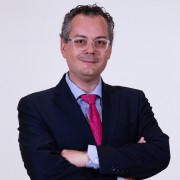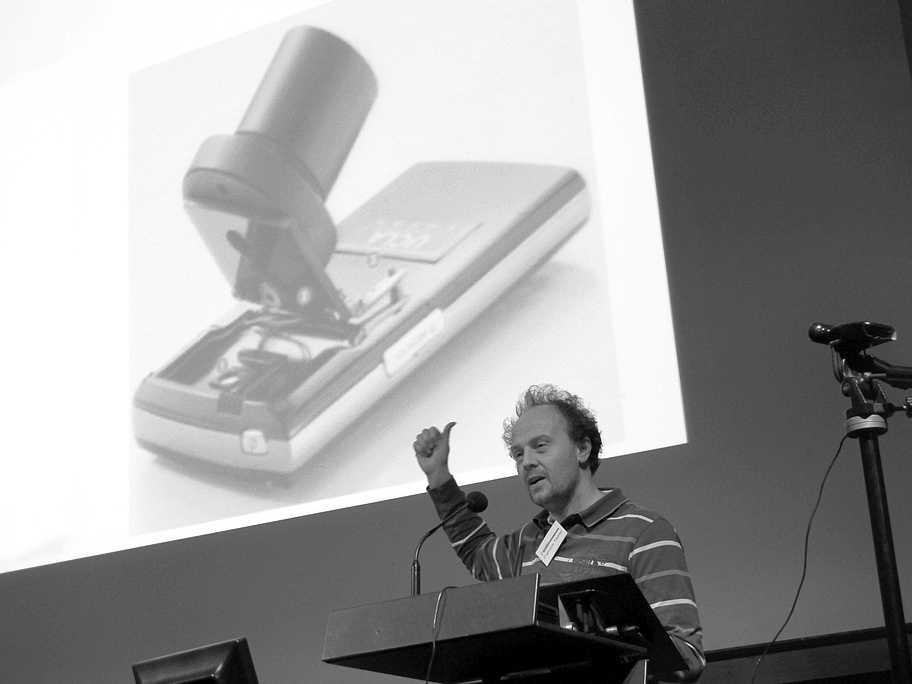This article constitutes an introduction to the concept of Open Science and its implications, challenges and problems. To do so, we take as a reference two recent works by Michael Nielsen, a pioneer of quantum computing and advocate for Open Science: first, the book Reinventing Discovery. The New Era of Networked Science (Princeton University Press), and second, a Ted Talk where he summarised some of his main arguments.
Before starting it would be useful to know what we understand by “open” in this context. The project Open Definition sets out principles to define ‘openness’ in relation to content and data. The definition could be: “A piece of content or data is open if anyone is free to use, reuse, and redistribute it — subject only, at most, to the requirement to attribute and share-alike”.
Concerning Science, we might think that the most remarkable changes are those related to open journals or open data; however, in my opinion these are only conditions that are needed in order to pursue a most remarkable change: the change in the way scientists pose questions and make discoveries. A clear example of the importance of scientific method is that the most durable legacy of scientists such as Galileo is the method of scientific discovery they developed. A transformation in the epistemology of science is more relevant than any single discovery because it might represents a change of scientific paradigm that opens gates to ask new questions and to solve problems in innovative and creative ways.
As Nielsen underlines, Webtools are instruments that improve our capacity to solve problems by amplifying our collective intelligence. They can create a shared space that enables mass collaboration. Webtools could to some extent create the conditions to replace fortuitous serendipity by a systematic approach to solve problems in an open context that facilitates interdisciplinarity. ¿What are the implications of the use of webtools for scientific purposes? We can suggest the following:
- Expanding the range of scientific questions we can ask and solve.
- Speeding-up the problem-solving process and the rhythm of scientific discoveries.
- Transforming the epistemology of science, this is, how we generate knowledge.
According to Nielsen the implications of Open Science are crucial in three areas:
- The way scientists collaborate to create knowledge.
- The ability to find meaning in knowledge.
- The relationship between science and society.
Collective intelligence
The use of webtools in science can harness collective intelligence. Although Nielsen does not like the metaphor between collective intelligence and a sort of collective brain, it is a good opportunity to remember the article written by H.G. Wells in 1937 for the new Encyclopédie Française, with the title “World Brain: The Idea of a Permanent World Encyclopaedia“. His analysis of the role of universities at that time could sound familiar to us.
Concurrently with these realizations there is a growing discontent with the part played by the universities, schools and libraries in the intellectual life of mankind. Universities multiply, schools of every grade and type increase, but they do not enlarge their scope to anything like the urgent demands of this troubled and dangerous age. They do not perform the task nor exercise the authority that might reasonably be attributed to the thought and knowledge organization of the world. It is not, as it should be, a case of larger and more powerful universities co-operating more and more intimately, but of many more universities of the old type, mostly ill-endowed and uncertainly endowed, keeping at the old educational level.
Both the assembling and the distribution of knowledge in the world at present are extremely ineffective, and thinkers of the forward-looking type whose ideas we are now considering, are beginning to realize that the most hopeful line for the development of our racial intelligence lies rather in the direction of creating a new world organ for the collection, indexing, summarizing and release of knowledge, than in any further tinkering with the highly conservative and resistant university system, local, national and traditional in texture, which already exists. These innovators, who may be dreamers today, but who hope to become very active organizers tomorrow, project a unified, if not a centralized, world organ to “pull the mind of the world together”, which will be not so much a rival to the universities, as a supplementary and co-ordinating addition to their educational activities – on a planetary scale.
Wells considers that the invention of microfilm at that time was the appropriate vehicle to reproduce and disseminate that imagined World Encyclopaedia. Wells says that:
There is no practical obstacle whatever now to the creation of an efficient index to all human knowledge, ideas and achievements, to the creation, that is, of a complete planetary memory for all mankind.
Nowadays, with the popularisation of Internet and personal computers and with the development of projects such as Wikipedia, we can understand how accurate was his vision. Still there is a long way to go for Open Science, but the way seems to be already paved.
One of the features of this evolution (¿revolution?) is its ubiquitousness but also the ability to adapt knowledge to the particular characteristics of communities.
[…] photography affords now every facility for multiplying duplicates of this – which we may call? – this new all-human cerebrum. It need not be concentrated in any one single place. It need not be vulnerable as a human head or a human heart is vulnerable. It can be reproduced exactly and fully, in Peru, China, Iceland, Central Africa, or wherever else seems to afford an insurance against danger and interruption.
This was the dream of an encyclopedia made of many different versions adapted to the different needs of people; as Wells said, an encyclopedia that “can be continually issued and revised”.
There is no doubt that the proposal of a “World Brain” was a premature display of collective intelligence. In the past years, there have been different approaches to the idea of collective intelligence based in the use of webtools. Some people consider that the impact of the webtools is very positive, for example James Surowiecki (author of The Wisdom of Crowds), whereas some others highlight the negative aspects of Internet, for example Nicholas Carr (author of The Shallows: What the Internet Is Doing to Our Brains).
Succesful examples in Open Science
The Polymath project was organised by Tim Gowers, a mathematician at Cambridge University and recipient of the Fields Medal. He decided to post a mathematical problem he wanted to solve in his blog in order to gather ideas and develop a solution to it. Over 37 days, 27 people wrote more than 800 comments. The problem was solved and the results published in a scientific paper. Gowers used webtools to foster mass collaboration. In Nielsen words (Nielsen, p. 2): “even the best mathematicians can learn a great deal from people with complementary knowledge, and be stimulated to consider ideas in directions they wouldn’t have considered in their own”.
The Galaxy Zoo project allowed more than 200,000 volunteers to classify galaxy images. This has produced so far more than 150 million galaxy classifications.
The GenBank is a online repository of genetic information that includes a single and freely accessible database about the human genome fed by the contributions of thousands of biologists.
The reCAPTCHA project is a free CAPTCHA service that helps to digitize books, newspapers and old time radio shows. You can also read the Science paper “reCAPTCHA: Human-Based Character Recognition via Web Security Measures” published in 2008.
Not so succesful examples in Open Science
The Quantiki project is the current name of the Wiki specialised in Quantum computing that Nielsen mentioned in the video. To some extent it failed because people didn’t participate as much as expected.
The same problem could be argue in relation to social networks created for scientists (Academia.edu, ResearchGate, iamResearcher, Mendeley, etc.). Probably the lack of a single network (a kind of Facebook) that brings the majority of scientists together discourage the use of this type of service (see the article Investigadores 2.0, in Spanish, for more information).
Finally Wikipedia, despite of its success and popularity, didn’t manage to attract the attention of the scientific community to create articles, as could be expected. The lack of direct atribution to the authors can disincentive the participation of scientists.
How to make Open Science work?
I consider that it is necessary to design an adequate system of incentives to advance in the scientific career. Science is a very competitive field and particularly young scientists have to fight to get papers in good journals to improve the CV and then apply for positions at the Universities.
Nielsen indicates that the projects that worked had something in common, either a conventional scientific outcome or a collective movement of the scientific community. For example, he says that the Polymed project worked because it had as a goal a conventional scientific outcome, the publication of a paper. The GenBank project was successful because important biologists, in a conference held in Bermuda in 1996, “convinced several major scientific grant agencies to make immediate data sharing a mandatory requirement of working in the human genome” (p. 7). This scientific policy was not follow in other areas such as virus information, creating a deep divide within the discipline.
These cases show how the design of incentives in the scientific career is a cornerstone. Recently in a conference I had the opportunity to meet Joi Ito, director of the MIT Lab. I asked him what they were doing at the MIT Lab. He surprised me by saying that they are not that much into publishing papers but into creating things. As long as we are talking about one of the pioneering centers in the world in applied science, we should reflect about which incentives to research and to progress in their scientific careers the member of the Lab have. I am sure that this can explain part of their success.
Some ideas to make Open Science work are:
- Modifying scientific policies: changing values and creating new incentives.
- Making publicly funded research open.
- Pursuing collective agreements.
- Preserving and protecting the attribution of the works.
Some actions that we can do as individuals are:
- To get involved in open projects.
- To push for changes in scientific policy.
- To give value to the contributions done in Open Science.
Question to debate
Some of these question are included in the Nielsen’s book:
- How far can the boundary between professional and amateur scientist be blurred? (p. 6)
- Will we one day see Nobel prizes won by huge collaborations dominated by amateurs? (p. 6)
- What other new ways can we find to build bridges between science and the rest of society? (p. 6)
- What will be the impact of these new bridging institutions? (p. 6)
- Should the move towards Open Science be led by single scientists or by governmental agencies?
Fotografía de portada: Citizen, Science, Education and Technology: new synergies to be explored, por MyScienceWork con licencia CC.

